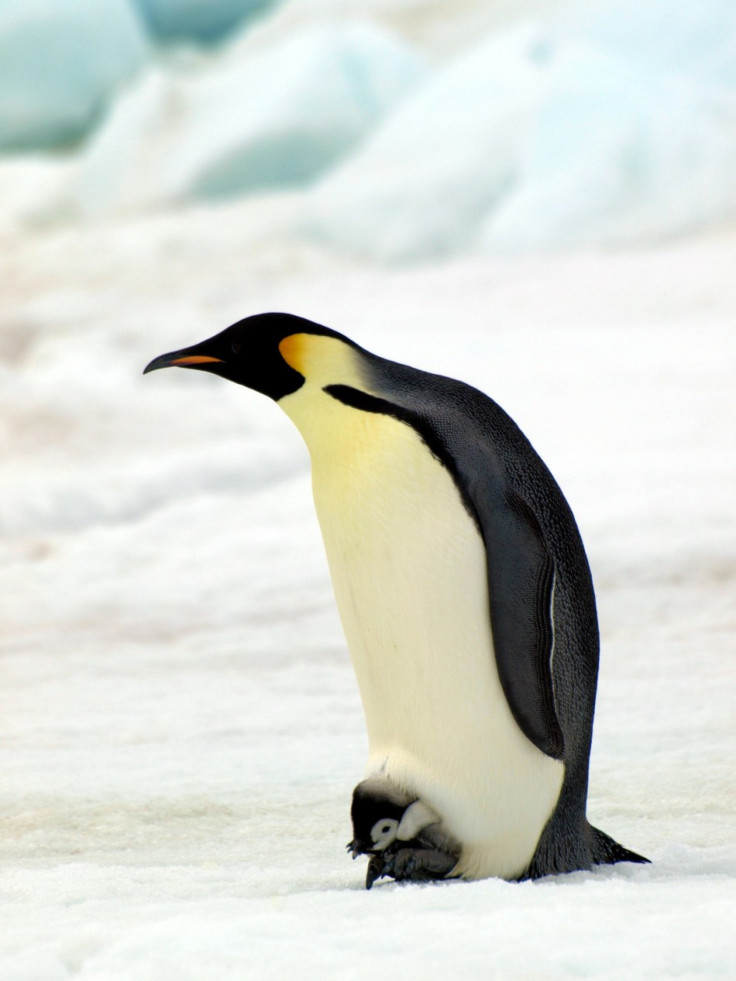Penguin Census Taken From Space

Here are some of the many uses of satellites: anchoring the GPS that powers navigation and geotagging systems in smartphones and cameras. Relaying phone, radio and television signals. And now, helping scientists count nearly 600,000 emperor penguins in Antarctica.
An international team of researchers used images taken from space to conduct a new census of the emperor penguin population in Antarctica and found almost twice as many birds as expected based on previous estimates. The scientists reported their findings in a paper published in the journal PLoS ONE on Friday.
The lead author of the study, Peter Fretwell of the British Antarctic Survey, said in a statement Friday that his team was delighted to be able find such a large number of emperor penguins.
We counted 595,000 birds, which is almost double the previous estimates of 270,000 --350,000 birds. This is the first comprehensive census of a species taken from space.
These black-and-white birds stand out dramatically against the snow, making it easy for the scientists to pick them out from 44 satellite images.
Researchers have long needed an accurate count of the current population as a starting point for any future analysis of population dynamics.
There's a growing consensus among scientists that emperor penguin populations will be affected by climate change. In February 2011, Fretwell and his colleagues said in another PLoS ONE study that they had recorded the first loss of an emperor penguin colony thanks to regional warming and a subsequent loss of sea ice.
When first discovered, the penguin colony on Emperor Island near the West Antarctic Peninsula had about 150 breeding pairs.
These numbers held steady until 1970, after there was a continuous decline. By 1999, there were fewer than 20 pairs, and in 2009, aerial photography revealed no remaining trace of the colony, the scientists wrote in 2011.
It's difficult to monitor the penguin's breeding habitats in remote areas not close to research stations, and the accuracy of the latest global population estimates have been questioned, according to the authors.
Previous work using satellite imagery to estimate penguin populations had errors due to the problems of differentiating between penguins, their shadows, and guano - penguin feces.
The authors of the current paper say they've improved upon previous methods by merging a higher-resolution panchromatic image - which comes out as black and white, but is sensitive to all wavelengths of light -- with a lower-resolution color image. The result is a picture detailed enough to allow the researchers to distinguish between penguins and their poop.
The team also found four new colonies of penguins and confirmed the existence of three other suspected colonies.
Our new global estimate may plausibly be used for calculation of future global population trends, the authors wrote.
Challenges remain, of course. The authors say it's hard to know if they missed any unknown pockets of penguins, since in some places the sea ice may have broken up early and removed any trace of a colony.
Also, colonies of less than 200 penguins are hard to identify at the resolution of the images that the scientists used. But the authors suspect that there is a limited number of these smaller groups, which are less able to adequately provide warmth for each other when they huddle together.
Another co-author and BAS biologist, Phil Trathan, said in a statement that though scientists are projecting a drop in the penguin population, the effects of warming in Antarctica are less pronounced in some regions.
We anticipate that the more southerly colonies should remain, he said, making these important sites for further research and protection.
© Copyright IBTimes 2024. All rights reserved.





















